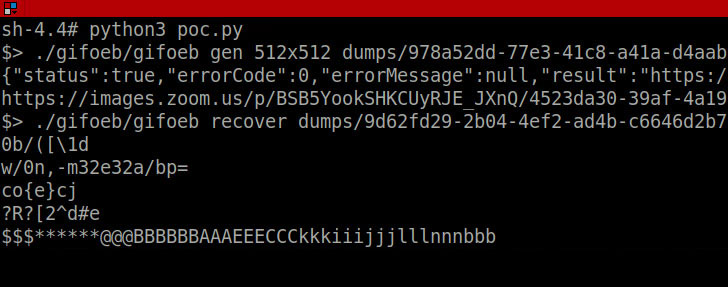Popular video conferencing app Zoom has addressed several security vulnerabilities, two of which affect its Linux client that could have allowed an attacker with access to a compromised system to read and exfiltrate Zoom user data—and even run stealthy malware as a sub-process of a trusted application.
According to cybersecurity researcher Mazin Ahmed, who presented his findings at DEF CON 2020 yesterday, the company also left a misconfigured development instance exposed that wasn't updated since September 2019, indicating the server could be susceptible to flaws that were left unpatched.
After Ahmed privately reported the issues to Zoom in April and subsequently in July, the company issued a fix on August 3 (version 5.2.4).
It's worth noting that for some of these attacks to happen, an attacker would need to have already compromised the victim's device by other means. But that doesn't take away the significance of the flaws.
In one scenario, Ahmed uncovered an issue with the Zoom Launcher for Linux that could allow an adversary to run unauthorized software owing to the manner it launches the "zoom" executable.
"This breaks all of the protection of application whitelisting, allows malware to run as a subprocess of a trusted vendor (Zoom), and is a bad design/security practice by all means," Ahmed said in an analysis.
That's not all. In a similar vein, an attacker with access to the victim's machine can read and exfiltrate Zoom user data and configuration by navigating to the local database and even accessing chat messages stored on the system in plaintext format.
Two other flaws involved an externally accessible Kerberos authentication service ("ca01.idm.meetzoom.us") and a TLS/SSL issue that lets malware inject custom certificate fingerprints into the local Zoom database.
"This is per user certificate pinning and intentionally allows for the user to allow custom certificates," Zoom said of the certificate injection flaw. "The user can write to their own database, but no other non-root users can. It's common best practice to have user applications run at their privilege level, as requiring Zoom to run as root would introduce unnecessary security risks to Zoom and our customers."
But it gets more interesting. Ahmed went on to highlight a memory leak vulnerability by exploiting the profile picture feature on Zoom to upload a malicious GIF image, download the rendered file, and extract data from it to leak portions of system memory.
"After an internal investigation, we've concluded that the behavior was not a memory leak but just our image utility's best effort at converting a malformed gif into a jpeg," the company said.
Although Ahmed believes this to be a consequence of a known flaw in ImageMagick image conversion software (CVE-2017-15277), Zoom has said it doesn't use the utility to convert GIFs uploaded as profile pictures into JPEG format.
In response to the disclosures, Zoom has taken down the exposed Kerberos authentication server to prevent brute-force attacks, while also acknowledging that it's working on addressing the lack of encryption while storing the chat logs.
It's recommended that users update Zoom to the latest version to mitigate any risk arising out of these issues.
"We thank Mazin for reporting his findings. We have fixed all relevant issues and recommend that users keep their Zoom clients up to date to ensure they receive ongoing security and product updates. Zoom appreciates vulnerability reports from researchers. If you think you've found a security issue with Zoom products, please send a detailed report to security@zoom.us," a spokesperson for the company told The Hacker News.
The development came as the company resolved a security flaw last month. It allowed attackers to crack the numeric passcode used to secure private meetings on the platform and eavesdrop on participants.
The article is taken from: https://thehackernews.com/




Comments
Post a Comment